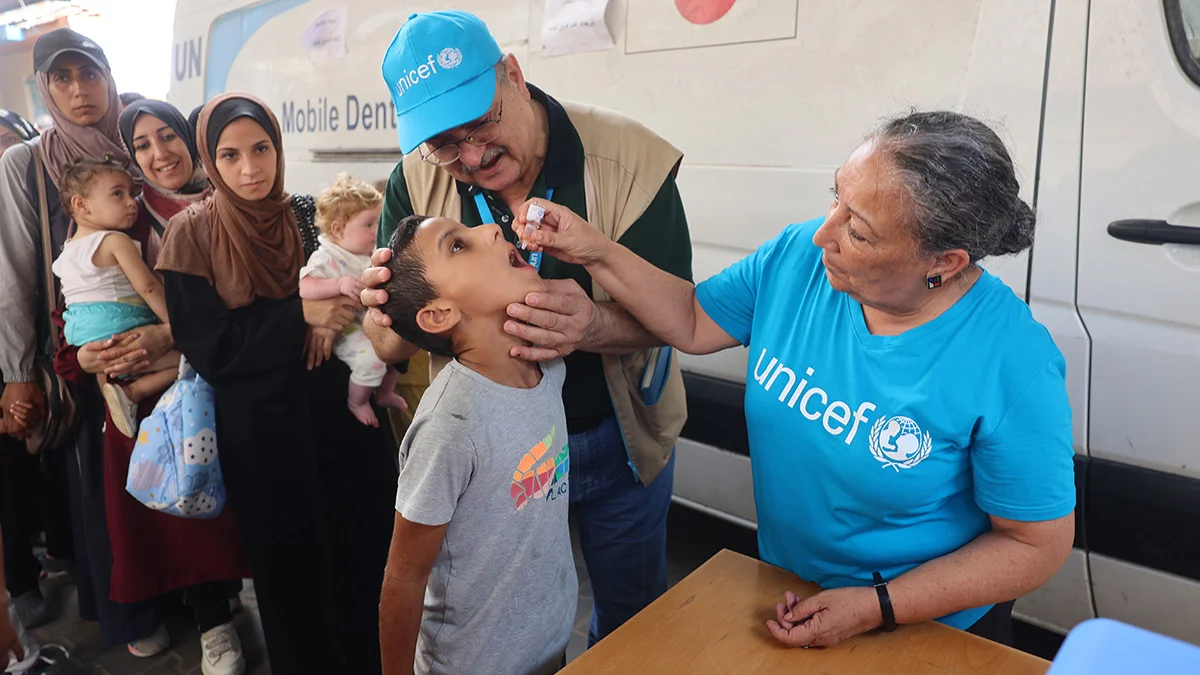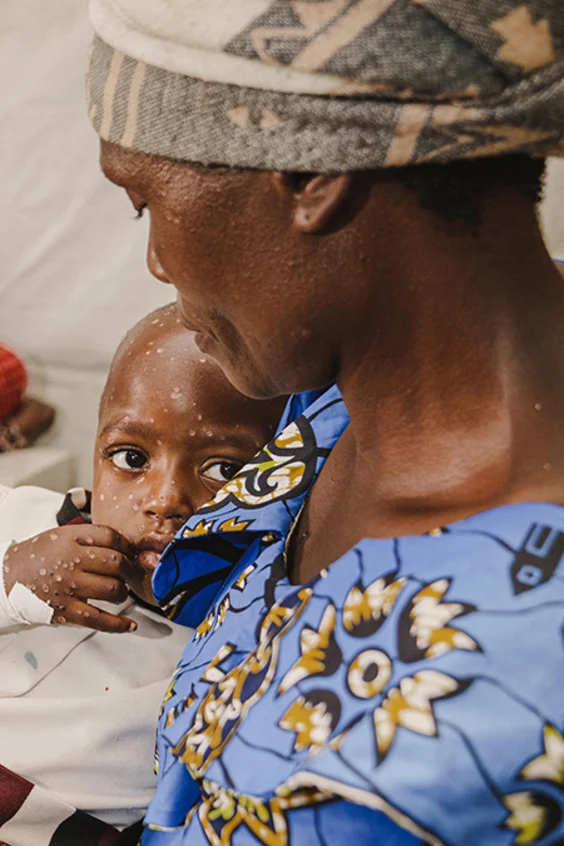Statement by UNICEF Regional Director for the Middle East and North Africa, Adele Khodr, on the completion of the first phase of the polio vaccination campaign in the Gaza Strip.
“The past three days have brought a rare bright spot amid the disastrous conflict in the Gaza Strip.
“After almost a year of families experiencing horrors no man, woman or child should ever have to endure, this week we saw what can be achieved with, simply, will.
“For at least a quarter of a century, there were no cases of polio in the Gaza Strip. Now from the depths of untreated sewage and rubble, the invisible menace is back. So far, one case of polio has been confirmed in an 11-month-old baby – a child whose short life has already been punctuated by the most challenging circumstances and who will now suffer irreparable physical harm.
“The risk of polio spreading within Gaza and even beyond, especially to neighbouring countries, remains high. This week, we began to address it. UNICEF, UNRWA and WHO are working tirelessly to roll out a campaign in Gaza to vaccinate 640,000 children under 10 years of age.
“The first phase of the campaign, which ran from 1-3 September, reached more than 189,000 children under 10 years old in the central area of the Gaza Strip, surpassing its initial target. Approximately 513 teams were deployed across the area.
“Despite relentless attacks on schools and sites sheltering uprooted children, exhausting displacement orders forcing families to relocate time and again, and widespread hunger levels that have at points pushed parts of Gaza to the brink of famine, families made the effort to turn out in high numbers to the vaccination sites. They know there is no time to waste to protect their children.
“History and scientific evidence have shown us that the safest and most effective way to stop the spread and protect children against polio is through vaccination. The vaccine is safe, and effective, and has been used to protect children in more than 40 countries over the last three years.
“However, none of this can be achieved without the area-specific humanitarian pauses to ensure healthcare workers and children can engage in the campaign without risking their lives. The agreed pauses were respected in this first phase, giving families and health workers the confidence to get the job done.
“This must continue. Without a polio pause to implement the remaining two phases of the campaign, we will fail to protect the children of Gaza and place other children in the region at risk. We must reach at least 90 per cent vaccination coverage to stop the virus from spreading.
“Preparing for this ambitious campaign and securing these pauses was not easy but it demonstrates that it is possible to allow supplies into the Strip, silence the strikes and protect civilians. There just has to be the will.
"Children in Gaza are at the very sharp end of the war beyond the explosions and bullets threatening their lives daily. The ongoing destruction of vital infrastructure - including in health, water, and sanitation systems – continues to increase the risk of deadly disease outbreaks across the Strip. Prior to the beginning of this conflict, children had very high immunization coverage in Gaza, of over 99 per cent.
“This is among the most dangerous and difficult vaccination campaigns on the planet. The Gaza Strip is already the most dangerous place in the world to be a child, and even with a polio pause, the vaccination campaign faces grave danger and immeasurable obstacles, including damaged roads and health infrastructure, displaced populations, looting and disrupted supply routes.
“Children have suffered enough. And now the stakes have risen to threatening other children in the region. We cannot fail.”






